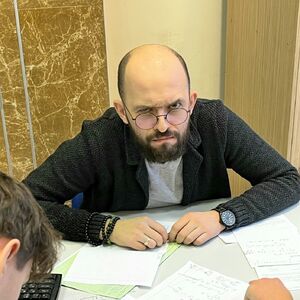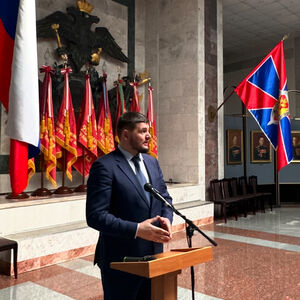Диссертация (1104273), страница 19
Текст из файла (страница 19)
M. Diameter-controlled synthesis ofsingle-crystal silicon nanowires // Appl. Phys. Lett. 2001. Vol. 78. P. 2214.2. Ross F. M., Tersoff J., Reuter M.C. Sawtooth faceting in silicon nanowires // Phys. Rev. Lett. 2005.Vol. 95. P. 146104.3. Hochbaum A. I., Fan R., He R., Yang P.
Controlled growth of Si nanowire arrays for deviceintegration // Nano Letters. 2005. Vol. 5, no. 3. Pp. 457-460.4. Schmidt V., Senz S., Gösele U. Diameter-dependent growth direction of epitaxial silicon nanowires// Nano Letters. 2005. Vol. 5, no. 5. Pp. 931-935.5. Duan X., Huang Y., Cui Y., Wang J., Lieber C. M.
Indium phosphide nanowires as building blocksfor nanoscale electronic and optoelectronic devices // Nature. 2001. Vol. 409. Pp. 66–69.6. Kelzenberg M. D., Turner-Evans D. B., Kayes B. M., Filler M. A., Putnam M. C., Lewis N. S.,Atwater H. A. Photovoltaic measurements in single-nanowire silicon solar cells // Nano Letters.2008.
Vol. 8, no. 2. Pp. 710–714.7. Stelzner Th., Pietsch M., Andrä G., Falk F., Ose E., Christiansen S. H. Silicon nanowire-based solarcells // Nanotechnology. 2008. Vol. 19, no 29. P. 295203.8. Гавриленко В. И., Грехов А. М., Корбутяк Д. В., Литовченко В. Г. // Оптические свойстваполупроводников (Киев, Наукова думка, 1987).9. Green M. A., Keevers M. J. // Optical properties of intrinsic silicon at 300 K. Progress inPhotovoltaics: Research and Applications.
1995. Vol. 3, no. 3. Pp. 189-192.10. Givargizov E. I. Fundamental aspects of VLS growth // J. Cryst. Growth. 1975. Vol. 31, Pp. 20-30.11. Wagner R. S., Ellis W. C. Vapor-solid-liquid mechanism of single crystal growth //Appl. Phys. Lett. 1964. Vol. 4, P. 89.12. Wang Y., Schmidt V., Senz S., Gösele U. Epitaxial growth of silicon nanowires using analuminium catalyst // Nature Nanotechnology. 2006. Vol. 1. Pp. 186-189.13. Eisenhawer B., Zhang D., Clavel R., Berger A., Michler J., Christiansen S.
Growth of dopedsilicon nanowires by pulsed laser deposition and their analysis by electron beam induced currentimaging // Nanotechnology. 2011. Vol. 22, no. 7. P. 075706.14. Fuhrmann B., Leipner H. S., Höche H.-R., Schubert L., Werner P., Gösele U. Ordered arrays ofsilicon nanowires produced by nanosphere lithography and molecular beam epitaxy //Nano Letters. 2005. Vol. 5, no. 12. Pp. 2524-2527.15. Oh S. H., van Benthem K., Molina S.
I., Borisevich A. Y., Luo W., Werner P., Zakharov N. D.,Kumar D., Pantelides S. T., Pennycook S. J. Point defect configurations of supersaturated auatoms inside Si nanowires // Nano Letters. 2008. Vol. 8, no. 4. Pp. 1016-1019.10916. Sivakov V., Andrä G., Himcinschi C., Gösele U., Zahn D. R. T., Christiansen S. H. Growthpeculiarities during vapor–liquid–solid growth of silicon nanowhiskers by electron-beamevaporation // Appl. Phys. A.
2006. Vol. 85, no.3. Pp. 311-315.17. Sivakov V., Heyroth F., Falk F., Andrä G., Christiansen S.H. Silicon nanowire growth by electronbeam evaporation: Kinetic and energetic contributions to the growth morphology //J. Cryst. Growth. 2007. Vol.
300, no. 2. Pp. 288–293.18. Sunkara M. K., Sharma S., Miranda R. Bulk synthesis of silicon nanowires using a lowtemperature vapor–liquid–solid method // Appl. Phys. Lett. 2001. Vol. 79, P. 1546.19. Civale Y., Nanver L. K., Hadley P., Goudena E. J. G. Aspects of silicon nanowire synthesis byaluminum-catalyzed vapor-liquid-solid mechanism // Proceedings of 7th Annual Workshop onSemiconductor Advances for Future Electronics (SAFE 2004).
2004. Veldhoven, TheNetherlands. Publ. STW, ISBN 90-73461-43-X. Pp. 692-696.20. Lieber C. M. Nanoscale science and technology: Building a big future from small things //MRS Bull. 2003. Vol. 28, no. 7. Pp. 486-491.21. Kamins T. I., Williams R. S., Basile D. P., Hesjedal T., Harris J. S. Ti-catalyzed Si nanowires bychemical vapor deposition: microscopy and growth mechanisms // J. Appl. Phys. 2001. Vol. 89,no. 2.
Pp. 1008-1016.22. Heath J. R, LeGoues F. K. A liquid solution synthesis of single crystal germanium quantum wires// Chem. Phys. Lett. 1993. Vol. 208, no. 3-4. Pp. 263-268.23. Hanrath T., Korgel B. A. Nucleation and growth of germanium nanowires seeded by organicmonolayer-coated gold nanocrystals // J. Am. Chem. Soc. 2002. Vol. 124, no. 7. Pp.
1424-1429.24. Zhang Y. F., Tang Y. H., Wang N., Lee C. S., Bello I., Lee S. T. Germanium nanowires sheathedwith an oxide layer // Phys. Rev. B. 2000. Vol. 61, no. 7. Pp. 4518-4521.25. Lauhon L. J., Gudiksen M. S., Wang D., Lieber C. M. Epitaxial core–shell and core–multishellnanowire heterostructures // Nature. 2002. Vol. 420, Pp. 57-61.26. Xia Y., Yang P., Sun Y., Wu Y., Mayers B., Gates B., Yin Y., Kim F., Yan H. One-dimensionalnanostructures: Synthesis, characterization, and applications // Adv. Mater. 2003. Vol. 15, no.
5.Pp. 353-389.27. Wagner R. S., Ellis W. C. The vapor-liquid-solid mechanism of crystal growth and its applicationto silicon // Trans. Metall. Soc. AIME. 1965. Vol. 233, Pp. 1053-1064.28. Wu Y., Yang P. Germanium nanowire growth via simple vapor transport // Chem. Mater. 2000.Vol. 12, no. 3. Pp. 605–607.29. Ostwald W. Über die vermeintliche Isomerie des roten und gelben Quecksilberoxyds und dieOberflächenspannung fester Körpe // Z. Phys. Chem. 1900. Vol. 34. P. 495.11030. Allen J.
E., Hemesath E. R., Perea D. E., Lensch-Falk J. L., Li Z. Y., Yin F., Gass M. H., Wang P.,Bleloch A. L., Palmer R. E., Lauhon L. J. High-resolution detection of Au catalyst atoms in Sinanowires // Nature Nanotechnology. 2008. Vol. 3. Pp. 168-173.31. Wagner C. Theorie der Alterung von Niederschlägen durch Umlösen (Ostwald-Reifung) //Z. Elektrochem. 1961. Vol. 65, no. 7-8. Pp. 581-591.32. Lifschitz I. M., Slyozov V.V. The kinetics of precipitation from supersaturated solid solutions //J. Phys. Chem. Solids. 1961. Vol.
19. Pp. 35-50.33. Hannon J. B., Kodambaka S., Ross F. M., Tromp R. M. The influence of the surface migration ofgold on the growth of silicon nanowires // Nature. 2006. Vol. 440. Pp. 69-71.34. Sivakov V., Andrä G., Gawlik A., Berger A., Plentz J., Falk F., Christiansen S. H. Siliconnanowire based solar cells on glass: synthesis, optical properties, and cell parameters //Nano Letters. 2009. Vol. 9, no. 4. Pp. 1549–1554.35. Peng K.-Q., Yan Y.-J., Gao S.-P., Zhu J.
Synthesis of large-area silicon nanowire arrays via selfassembling nanoelectrochemistry // Adv. Mater. 2002. Vol. 14, no. 16. Pp. 1164-1167.36. Peng K.-Q., Hu J. J., Yan Y. J., Fang H., Xu Y., Lee S. T., Zhu J. Fabrication of single crystallinesilicon nanowires by scratching a silicon surface with catalytic metal particles //Adv. Funct. Mater. 2006. Vol.
16, no. 3. Pp. 387–394.37. Peng K.-Q., Wu Y., Fang H., Zhong X., Xu Y., Zhu J. Uniform, Axial-orientation alignment ofone- dimensional single-crystal silicon nanostructure arrays // Angew. Chem. Int. Edn. 2005.Vol. 44, no. 18. Pp. 2797–2802.38. Hochbaum A. I., Gargas D., Hwang Y. J., Yang P.
Single crystalline mesoporous silicon nanowires// Nano Letters. 2009. Vol. 9, no. 10. Pp. 3550-3554.39. Hochbaum A. I., Chen R., Diaz Delgado R., Liang W., Garnett E. C., Najarian M., Majumdar A.,Yang P. Enhanced thermoelectric performance of rough silicon nanowires // Nature. 2008.Vol.
451. Pp. 163 – 167.40. Nassiopoulou A. G., Gianneta V., Katsogridakis C. Si nanowires by a single-step metal-assistedchemicaletchingprocessonlithographicallydefinedareas:formationkinetics//Nanoscale Research Lett. 2011. Vol. 6. P. 597.41. Bai F., Li M., Song D., Huang R., Jiang B., Li Y. Template-free fabrication of siliconmicropillar/nanowire composite structure by one-step etching // Nanoscale Research Lett.
2012.Vol. 7. P. 557.42. Peng K.-Q., Zhang M., Lu A., Wong N. B., Zhang R., Lee S.-T. Ordered silicon nanowire arraysvia nanosphere lithography and metal-induced etching // Appl. Phys. Lett. 2007. Vol. 90, no. 16.P. 163123.11143. Zhang M.-L., Peng K.-Q., Fan X., Jie J.-S., Zhang R.-J., Lee S.-T., Wong N.-B. Preparation oflarge area uniform silicon nanowires arrays through metal-assisted chemical etching //J. Phys. Chem. C. 2008. Vol. 112, no. 12. Pp. 4444-4450.44.
Sivakov V. A., Brönstrup G., Pecz B., Berger A., Radnoczi G. Z., Krause M., Christiansen S. H.Realization of vertical and zigzag single crystalline silicon nanowire architectures //J. Phys. Chem. C. 2010. Vol. 114, no. 9. Pp. 3798–3803.45. Sivakov V., Christiansen S. Novel discovery of silicon // J.
Nanoelectron. Optoelectron. 2012.Vol. 7, no. 6. Pp. 583-590.46. Dorrer Ch., Rühe J. Wetting of Silicon Nanograss: From Superhydrophilic to SuperhydrophobicSurfaces // Adv. Mater. 2008. Vol. 20, no. 1. Pp. 159-163.47. Stubenrauch M., Fischer M., Kremin C., Stoebenau S., Albrecht A., Nagel O. Black silicon—newfunctionalities in microsystems // J. Micromech. Microeng. 2006. Vol. 16, no 6. Pp. S82-S87.48. Choi C.-H., Kim C.-J. Large slip of aqueous liquid flow over a nanoengineered superhydrophobicsurface // Phys. Rev.
Lett. 2006. Vol. 96, no. 6. 066001.49. Uhlir A. Electrolytic shaping of germanium and silicon // Bell. Syst. Tech. J. 1956. Vol. 35, no. 2.Pp. 333-337.50. Jung K. H., Shin S., Kwong D. L. Development in luminescence porous silicon //J. Electrochem. Soc. 1993. Vol. 140. Pp. 3046-3050.51. Лабуков В. А., Бондаренко В. Р., Борисенко В.Е. Получение, свойства и применениепористого кремния // Зарубежная электронная техника. 1978. Т.
15, вып. 3.52. Beale M. I. J., Chew N. J., Uren M. J., Cullis A.G., Benjamin J. D. Microstructure and formationmechanisms of porous silicon // Appl. Phys. Lett. 1985. Vol. 46, no. 1. Pp. 86-93.53. Smith R. L., Collins S. D. Porous silicon formation mechanisms // J. Appl. Phys. 1992. Vol. 71,no. 8. Pp. R1-R12.54. Lehmann V., Gösele U. Porous silicon formation: A quantum wire effect // Appl. Phys. Lett.
1991.Vol. 58, no. 8. Pp. 856-858.55. Kanemitsu Y. Light emission from porous silicon and related materials // Phys. Rev. 1995.Vol. 263, no. 1. Pp. 1-91.56 Lehmann V., Stengl R., Luigart A. On the morphology and the electrochemical formationmechanism of mesoporous silicon // Materials Science and Engineering B. 2000. Vol. 69–70.Pp. 11–22.57. Cullis A. G., Canham L. T., Calcott P. D.
















